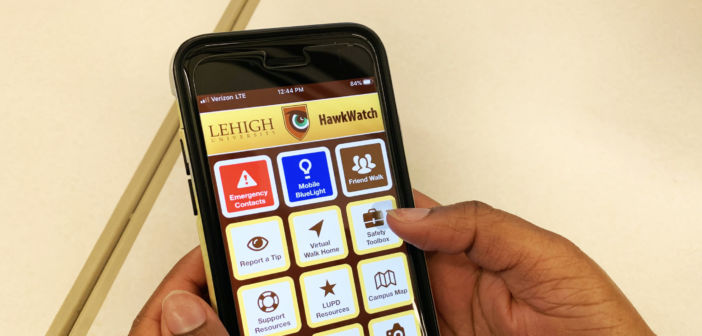When a graduate student was apprehended near Farrington Square on Monday, Sept. 16, some students were first notified of the situation via The Brown and White Twitter feed or friends on campus rather than the HawkWatch Alerts system run by LUPD.
LUPD Chief Jason Schiffer said many people brought concerns to him about the timeliness of the alert. He emphasized there are different types of alerts.
“I want to make one thing clear,” Schiffer said. “If there was an immediate threat to safety on campus, such as a gas leak, chemical spill or, of course, the one people always think of, an active shooter, our protocol at that point would be to send out an immediate notification to campus based on the information that we know at the time.”
He said LUPD did not see the Sept. 16 incident as a life-threatening event.
“We had a male who was acting erratically and we encountered him and took him into custody and it wasn’t until after he was handcuffed and in custody and there was no more danger, there was the discovery that he had a gun in his backpack,” Schiffer said. “Had we gotten a call that he was waving a gun around — that is the type of instance where we would want to put out a notification as quickly as we can based on the information we know.”
An email was sent out to the campus community soon after the student was taken into custody.
Linda Harbrecht, director of communication for Lehigh’s Office of Communications and Public Affairs, said because the gun was not discovered as the event was unfolding, the incident was not an active shooter situation and therefore was not treated as such.
LUPD is held accountable by the Clery Act, federal legislation that requires colleges to publicly share crime information and statistics with students. The act was put into place following the death of Lehigh student Jeanne Clery, who was murdered in her dorm in 1986. It was found that Lehigh did not share adequate information on campus safety and security following her death.
“We have a lot of obligations under the Clery Act to communicate to the population, our campus population,” Schiffer said. “The act specifically defines a number of crimes. If they have occurred, we have to send out a timely warning to the campus. There are also security alerts. These don’t fall under the Clery Act. These could be things that are major disruptions to campus.”
Lehigh’s Office of Communications and Public Affairs and LUPD agree that HawkWatch Alerts are effective and important.
While every member of the Lehigh community receives HawkWach safety alert texts, Harbrecht encourages people to download the personal HawkWatch safety app for its added safety features and other campus benefits.
“We want to make sure that students are using the app,” Dean of Students Katherine Lavinder said. “We have encouraged a lot of families who have expressed concern to also download the app and use that to gather information about what is going on on campus.”
HawkWatch alerts were introduced to campus during the 2018-2019 academic year. Prior to 2018, the LU Alerts system was used to notify the campus of an emergency. LU Alerts were sent out through text message and email.
With the launch of HawkWatch, students now have the ability to download the app, which allows access to more safety options, such as reaching LUPD quickly, reporting a tip or activating the mobile blue light system.






Comment policy
Comments posted to The Brown and White website are reviewed by a moderator before being approved. Incendiary speech or harassing language, including comments targeted at individuals, may be deemed unacceptable and not published. Spam and other soliciting will also be declined.
The Brown and White also reserves the right to not publish entirely anonymous comments.